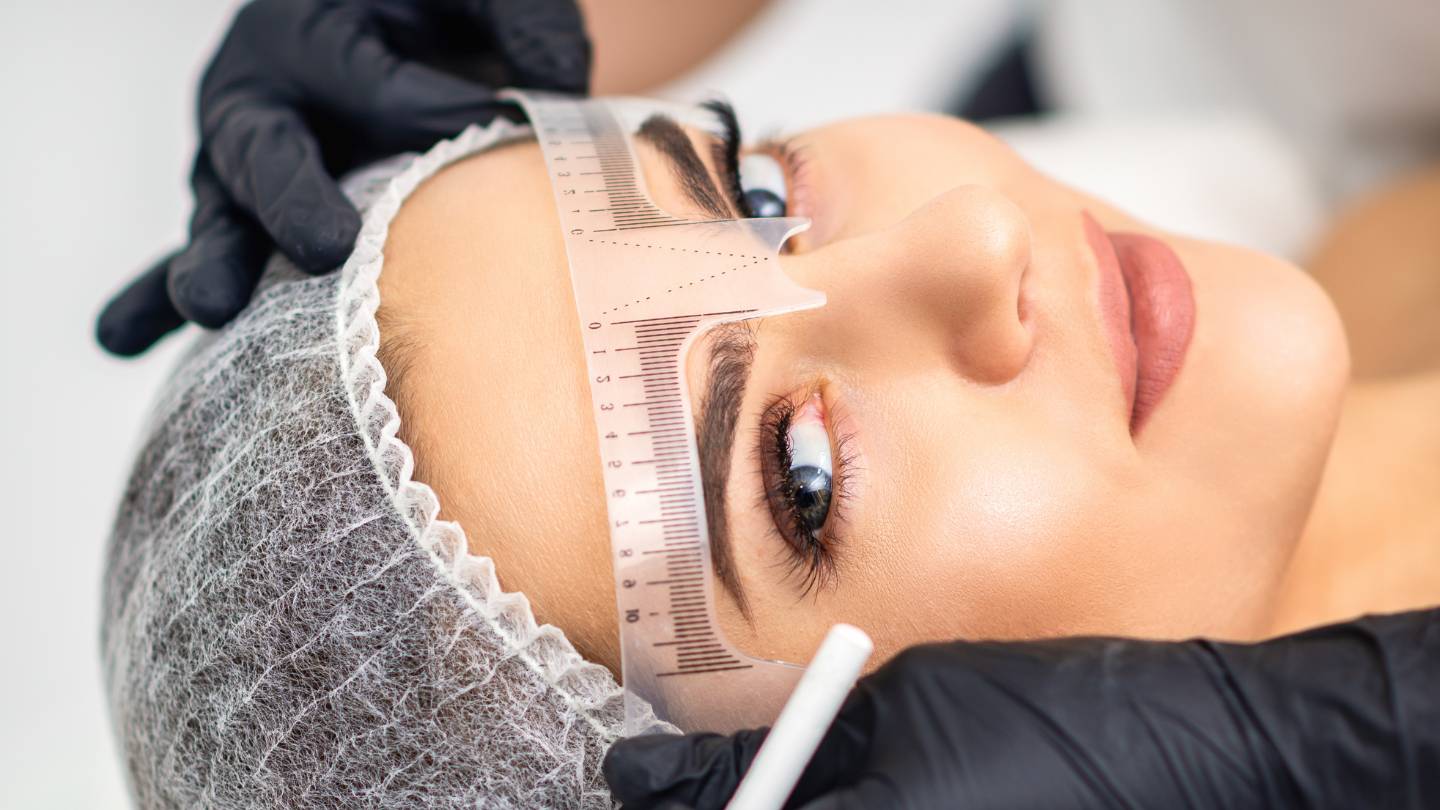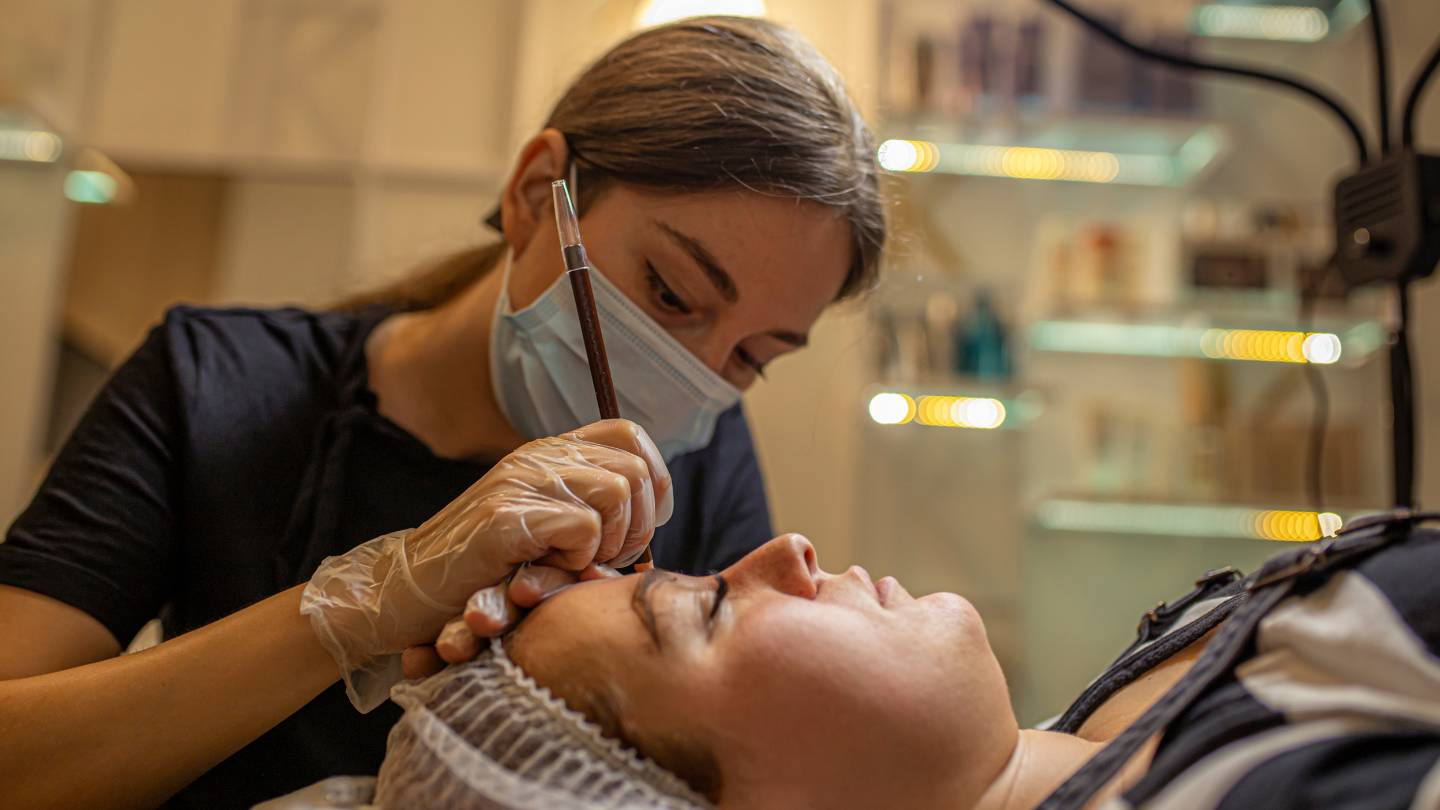Microblading is a semi-permanent cosmetic procedure that involves the meticulous application of pigment to enhance the appearance of eyebrows. After undergoing this procedure, it’s essential to follow the correct aftercare routine to achieve optimal results.
One of the key concerns is whether you can go out in the sun after microblading. The short answer is no. You should avoid sun exposure immediately after microblading.
Sun exposure can negatively affect the healing process and the longevity of the pigment. This article will discuss why avoiding the sun is necessary, how long you need to avoid it, and what steps you can take to protect your new brows.
Let’s get straight to the point
After microblading, it’s essential to avoid sun exposure for at least two weeks to ensure proper healing and prevent pigment fading, infections, and hyperpigmentation. UV rays can break down pigments and disrupt healing.
Protect your brows by wearing a hat, sunglasses, and avoiding peak sun hours. After the two-week healing period, use sunscreen regularly to protect the pigment in the long term.
Avoid swimming, tanning beds, and certain skin treatments to maintain the color and shape of your brows. Proper aftercare ensures your microbladed eyebrows stay bold and beautiful.
Why Is Sun Exposure Harmful After Microblading?
After microblading, your skin is extremely sensitive, as tiny cuts are made to deposit the pigment. These small wounds need time to heal properly, and exposure to UV rays can disrupt this healing process.
Here’s why the sun should be avoided:
- UV Rays Can Cause Pigment Fading: UV rays break down the pigments used in microblading, causing them to fade prematurely. This will lead to the need for more frequent touch-ups.
- Increased Risk of Infections: Freshly microbladed skin is more vulnerable to infections, and UV exposure can slow down the healing process, increasing the risk of infection.
- Hyperpigmentation: The combination of trauma to the skin and sun exposure can cause hyperpigmentation (dark spots), especially in individuals with more sensitive skin.
How Long Should You Avoid Sun Exposure After Microblading?
The first two weeks following your microblading procedure are essential. During this time, the pigment is still settling into your skin, and your eyebrows are healing.
Direct sun exposure during these weeks can significantly impact the final results. Most professionals recommend avoiding the sun entirely for at least two weeks.
However, full sun protection should be practiced for up to four weeks to ensure proper healing.
What Happens If You Go Out In The Sun Too Soon?
Going out in the sun too soon after microblading can result in several problems:
- Pigment Fading: As mentioned earlier, UV rays can break down the pigments, leading to uneven fading or even colour changes in your brows.
- Scab Disruption: Sun exposure can dry out the skin, leading to premature scab removal. Scabs are essential for healing, and picking or disrupting them can lead to patchy pigment retention.
- Infection Risk: Heat and sweat from being outdoors can encourage bacteria growth around the treated area, increasing the risk of infection.
How To Protect Your Brows When Going Out?
If you must go outside, especially during the first few weeks after your procedure, follow these tips to minimise sun exposure and protect your healing brows.
1. Wear A Hat
One of the easiest ways to shield your microbladed brows from the sun is by wearing a wide-brimmed hat. This provides direct shade for your eyebrows and can block a significant amount of UV rays.
2. Use Sunscreen (After Two Weeks)
Once your eyebrows have healed—typically after the first two weeks—you can start applying sunscreen to protect them. Choose a broad-spectrum SPF that is safe for sensitive skin. Make sure the product you use does not contain ingredients that might irritate your healing skin.
3. Limit Outdoor Exposure
If possible, try to avoid peak sun hours—typically between 10 AM and 4 PM. This is when the sun’s rays are the strongest and can cause the most damage to your newly microbladed eyebrows.
4. Wear Sunglasses
Sunglasses with large frames can provide additional protection by shielding the area around your brows from direct sunlight. They also help protect against wind and dust, which can irritate the skin.
Long-Term Sun Protection For Microbladed Eyebrows
Even after the initial healing period, sun exposure can still have negative effects on the longevity of your microbladed eyebrows. Long-term sun care is essential for maintaining the colour and shape of your brows.
1. Apply Sunscreen Daily
To maintain the colour and definition of your microbladed eyebrows, make sunscreen a part of your daily skincare routine. Even if it’s cloudy or winter, UV rays can still damage your brows and cause the pigment to fade over time.
2. Avoid Tanning Beds
Tanning beds expose you to UV rays that are just as harmful as the sun, if not more. Artificial UV light can accelerate pigment fading, so it’s essential to avoid tanning beds entirely after microblading.
3. Be Cautious With Skin Treatments
Certain skin treatments such as chemical peels, laser treatments, or microdermabrasion can cause your microbladed pigment to fade. Inform any skincare professionals about your cosmetic tattoo before undergoing treatments that involve the brow area.
What About Swimming In The Sun After Microblading?
Many people ask, “Can I swim in the sun after microblading?” Swimming—whether in the ocean, pool, or any other water body—should be avoided during the healing phase. Here’s why:
- Chlorine and Salt Water: Both chlorinated pool water and salt water can fade the microbladed pigment and even change its colour. These substances can also dry out the healing skin, leading to further irritation.
- Extended Moisture Exposure: Prolonged exposure to water can prevent proper healing and pigment retention. The skin around your eyebrows must remain dry during the first two weeks, which means avoiding swimming altogether.
- Infection Risk: Pools and oceans contain bacteria that can lead to infections in the delicate, healing microbladed area. The small cuts made during microblading are prone to bacterial infections if exposed to unclean water.
What Should You Do If Your Brows Get Wet?
Accidents happen, and sometimes your microbladed eyebrows may get wet despite your best efforts. If this happens, follow these steps:
- Gently Pat Them Dry: Use a clean, soft tissue or cloth to gently pat the area dry. Do not rub or press down too hard, as this can dislodge the pigment.
- Avoid Excess Moisture: Do your best to keep the area dry for the remainder of the healing process.
- Consult Your Technician: If you’re concerned that moisture may have impacted the pigment, contact your microblading artist. They can provide additional guidance or schedule a touch-up session if necessary.
Conclusion
Protecting your microbladed eyebrows from sun exposure is essential for achieving optimal results and ensuring long-lasting pigment retention. Avoid direct sunlight for at least the first two weeks and take precautions like wearing a hat and sunglasses if you must go outside.
Once your brows have healed, apply sunscreen regularly to protect the pigment from UV rays. Long-term care, such as avoiding tanning beds and being mindful of skin treatments, will help maintain the color and shape of your brows.
By following these guidelines, you’ll ensure that your microbladed brows stay beautiful and bold for as long as possible.
FAQ About Microblading
Can I Swim In The Sun After Microblading?
It’s generally recommended to avoid swimming, especially in chlorinated pools and hot tubs, for at least two weeks after microblading. Sun exposure while swimming can be harsh on the healing skin.
What Type Of Sunscreen Should I Use On My Microbladed Eyebrows?
Use a broad-spectrum sunscreen with at least SPF 30. Ensure it’s suitable for sensitive skin and doesn’t contain harsh chemicals. Apply the sunscreen gently to avoid disturbing the healing process.
Can I Use A Hat Or Sunglasses For Sun Protection After Microblading?
Yes, wearing a hat or sunglasses can provide additional protection from the sun. However, ensure the hat or sunglasses do not rub against the microbladed area.
What Should I Do If My Eyebrows Get Sunburned After Microblading?
If your eyebrows get sunburned, consult your microblading technician or a dermatologist. They can guide how to care for the affected area and prevent further complications.
How Long Does It Take For The Eyebrows To Heal From Microblading Fully?
The complete healing process may take 4-6 weeks. During this time, following the aftercare instructions, including sun protection, is crucial to achieve the best results.



